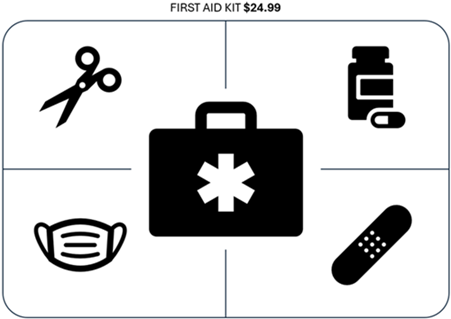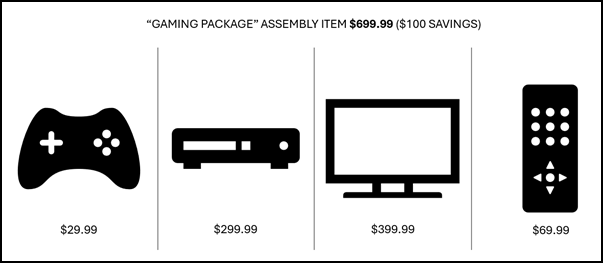Understanding kits and assembly items
Kits contain items that are only sold together as one item; the items included in kits are not sold separately. Assembly items include items that are sold separately as well as in the assembly item.
When you build a kit, the on hand quantities of the items included in the kit will decrease and the on hand quantity of the kit itself will increase. When a customer purchases a kit, only the on hand quantity of the kit itself will decrease. Similarly, when a customer returns a kit, only the on hand quantities of the kit itself will increase. When you break a kit, the on hand quantities of the items included in the kit will increase and the on hand quantity of the kit itself will decrease.

When you add an assembly item, the on hand quantities of the items included in the assembly item do not decrease. However, when a customer purchases an assembly item, the on hand quantities of the items included in the assembly item will decrease. This is because the items in the assembly item can be sold separately as well as in the assembly item. Similarly, when a customer returns an assembly item, the on hand quantities of the items included in the assembly item will increase.

Another difference between kits and assembly items is whether cashiers or salespeople can modify them in POS. Cashiers and salespeople cannot modify kits in POS, but they can modify assembly items in POS. For example, a consumer electronics store might create a gaming system assembly item containing a 24" monitor, gaming computer, keyboard, mouse, and speakers. A customer might negotiate with a salesperson at the store to upgrade to a 27" monitor. Because assembly items can be modified in POS, the salesperson can remove the 24" monitor and add the 27" monitor to the assembly item. RMH will automatically adjust the price of the assembly item to account for the larger monitor. However, if the salesperson has permission to change pricing, they can change the prices based on what they have negotiated with the customer.